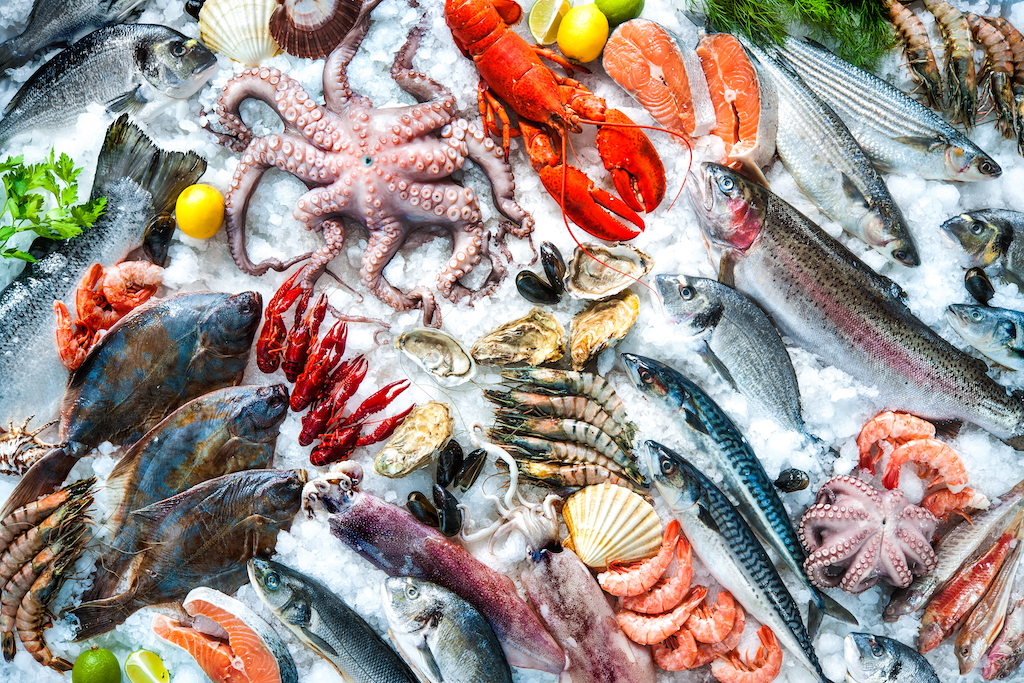- Finfish—small pelagic fish (herring, sardines, anchovies), medium pelagic fish (bonito, mahi-mahi), giant pelagic fish (tuna, swordfish), salmonids (salmon, trout), carps, cichlids (tilapia), cods (cod, haddock, pollock), and demersal fish (flounder)
- Crustaceans—crabs, shrimp, krill, prawns, lobster
- Cephalopods—octopus, squid
- Mollusks—clams, cockles, sea snails, mussels, scallops
- Aquatic vegetation—water spinach, Ipomoea aquatica
- Algae—seaweed
- Different aquatic animals—mammals, bugs, sea cucumbers
Aquatic meals may be farmed or wild-caught, and are sourced from inland waters like lakes, rivers, and wetlands; coastal areas like estuaries, mangroves, or near-shore; and marine or ocean waters. Regardless of at the moment being an vital contribution to wholesome diets for billions of individuals globally, aquatic meals are sometimes undervalued nutritionally as a result of their variety tends to be restricted to protein or power worth, or framed as a monolithic class of “seafood or fish.” [1] Nonetheless, there’s big selection of aquatic meals produced all through the world and out there throughout each season. At present, wild fisheries harvest over 2,370 species and aquaculture growers farm roughly 624 species. [2]
Comments
0 comments
